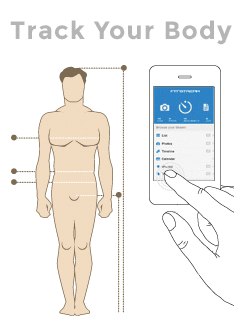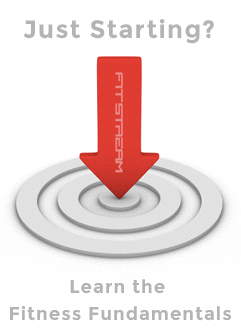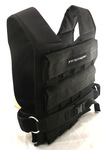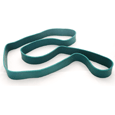How to do dips
- Support your body weight in an upright position, arms straight, hands gripping the parallel bars / rings / dipping station.
- Lower your body by bending at the elbows. Keep your shoulders close to your sides and the movement steady and controlled.
- Press your body back up to the original starting position so that your arms are nearly straight but not quite locked. Repeat.
Notes:
- Leg position can be bent, crossed or straight during the exercise.
- To ensure the triceps are targetted, ensure your body is straight. Leaning over will apply emphasis to the chest muscles.
- Many people find fitness rings an excellent alternative to a fixed bar for dips. Whilst a fundamentally harder exercise, the free movement of the rings allow your joints to track naturally and safely, and enhance muscular recruitment for additional support.
Dips guide
If we were to recommended two basic bodyweight strength exercises it would be pull-ups and dips. Dips are an excellent compound exercise that really challenges the upper-body, working the triceps, chest and shoulder muscles in one movement.
Dips for beginners
It's not uncommon to be unable to perform any dips at all when first starting out, so don't be put off! If you're struggling with dips there are many techniques to building up the required strength -
Assisted dips
Adding assistance to the dip exercise is a basic, yet effective approach to building up strength. This essentially involves the use of techniques or equipment to bear some of your bodyweight to make the exercise more achievable but still challenging. As you become stronger you can lessen the amount of support until you're able to perform dips unaided.
Leg assisted dips
Begin with double leg assisted dips - with a bench positioned beneath the dipping station to support both legs during the exercise. Use the legs as little as possible during the lift.
As you build strength, progress to single leg assisted dips, supporting only one leg instead of two.
Using resistance bands for dips assistance is a cheap and effective technique to building up the necessary strength.
Resistance bands are available in various sizes and thickness to help support your body weight to make the exercise possible. Simply loop the resistance band over your dipping station or rings and place your knee (or knees) into the band loop.
Negative reps
A common technique used to help build dip strength is to perform only the negative part of the repetition.
Use a bench to get into position (or jump up to the support position) and only perform the lowering part of the exercise. You will soon develop enough strength to start doing full repetitions.
Advanced dips exercise
If you're finding bodyweight dips easy and performing 15+ reps without breaking a sweat, it's time to mix things up.
Weighted dips
Adding additional weight to your dips is a great way to increase the intensity of the exercise, break plateaus and develop a very impressive strength to bodyweight ratio. You should only use this technique when fully proficient with standard dips as it can be a dangerous shock to joints and tendons if you're not up to the task.
Please note that when starting out with weighted dips, begin with small additions and incrementally increase the weight as you get stronger.
Try the following methods of adding weight to your dips:
- A weighted vest is a simple, adjustable method of adding incremental weight to your dips. The great thing about weighted vests is that the extra weight is closely, yet evenly distributed over your body.
- A dipping belt will allow you to attach various weight plates to your waist for some serious added resistance.
- Hold dumbells, or a medicine ball between your feet or legs for a simple way to add weight to dips without needing specialist equipment (This technique becomes more difficult as the weight increases).
Gymnastics ring dips
Gymnastics rings are a versatile piece of fitness equipment that increase the difficulty of exercises and maximise muscular recruitment. As the rings are free to move independently they can be safer and easier on the joints.
See ring dips exercise for further information.
Dips exercise variations
There are many variations and progressions for the basic dip exercise -
- Weighted dips - add additional weight to your dips for increased intensity.
- Ring dips - using gymnastics rings, makes this basic bodyweight exercise even more difficult due to the extra stabilising muscles required to keep you upright.
- If proficient with both dips and pull-ups you might want to consider training for the muscle-up. This is an impressive exercise demonstrating both high strength and superb technique.
 Fitstream AppTrack your fitness progress and see the difference for yourself with our free app
Fitstream AppTrack your fitness progress and see the difference for yourself with our free app












